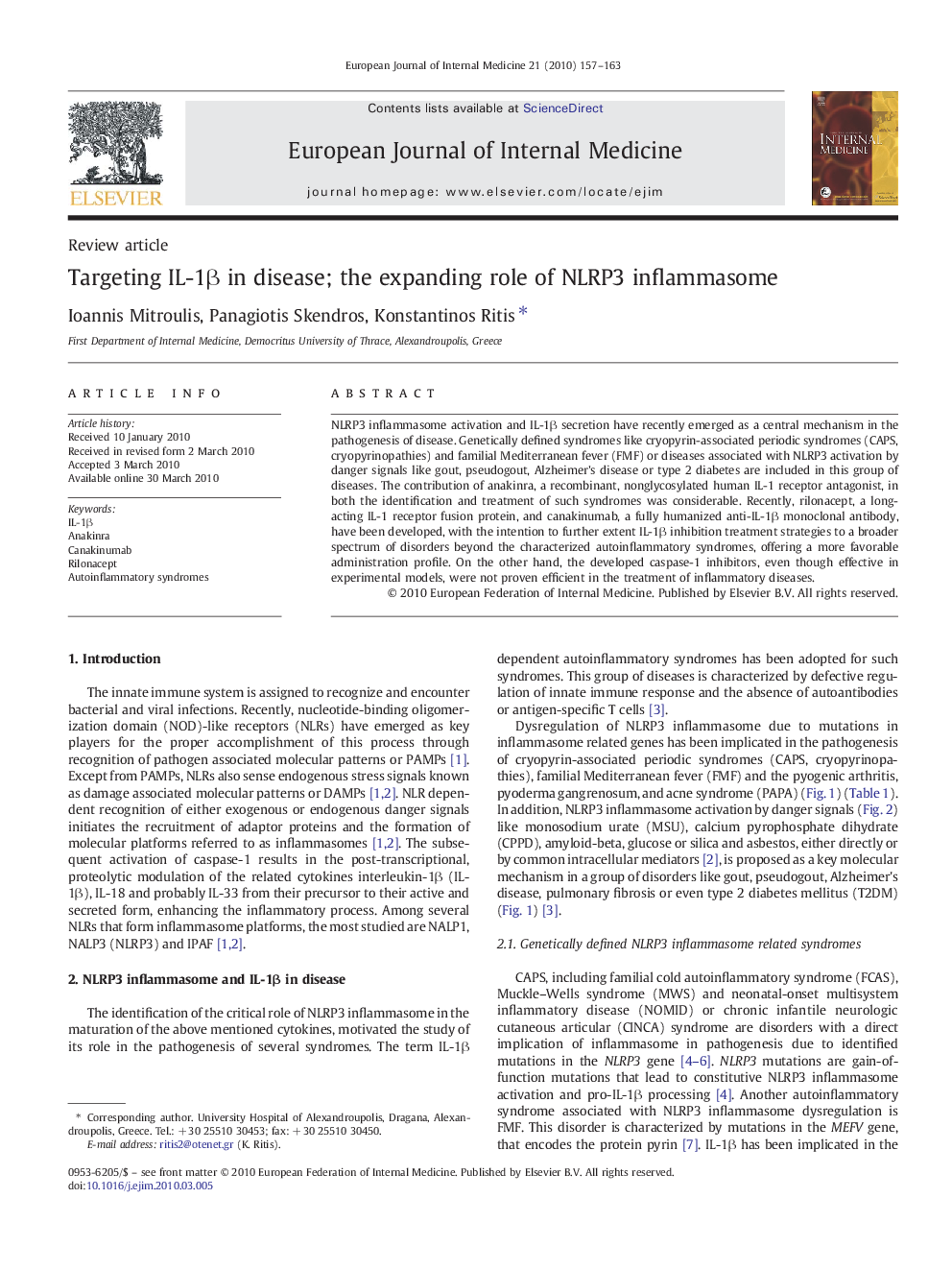| Article ID | Journal | Published Year | Pages | File Type |
|---|---|---|---|---|
| 3466566 | European Journal of Internal Medicine | 2010 | 7 Pages |
NLRP3 inflammasome activation and IL-1β secretion have recently emerged as a central mechanism in the pathogenesis of disease. Genetically defined syndromes like cryopyrin-associated periodic syndromes (CAPS, cryopyrinopathies) and familial Mediterranean fever (FMF) or diseases associated with NLRP3 activation by danger signals like gout, pseudogout, Alzheimer's disease or type 2 diabetes are included in this group of diseases. The contribution of anakinra, a recombinant, nonglycosylated human IL-1 receptor antagonist, in both the identification and treatment of such syndromes was considerable. Recently, rilonacept, a long-acting IL-1 receptor fusion protein, and canakinumab, a fully humanized anti-IL-1β monoclonal antibody, have been developed, with the intention to further extent IL-1β inhibition treatment strategies to a broader spectrum of disorders beyond the characterized autoinflammatory syndromes, offering a more favorable administration profile. On the other hand, the developed caspase-1 inhibitors, even though effective in experimental models, were not proven efficient in the treatment of inflammatory diseases.
